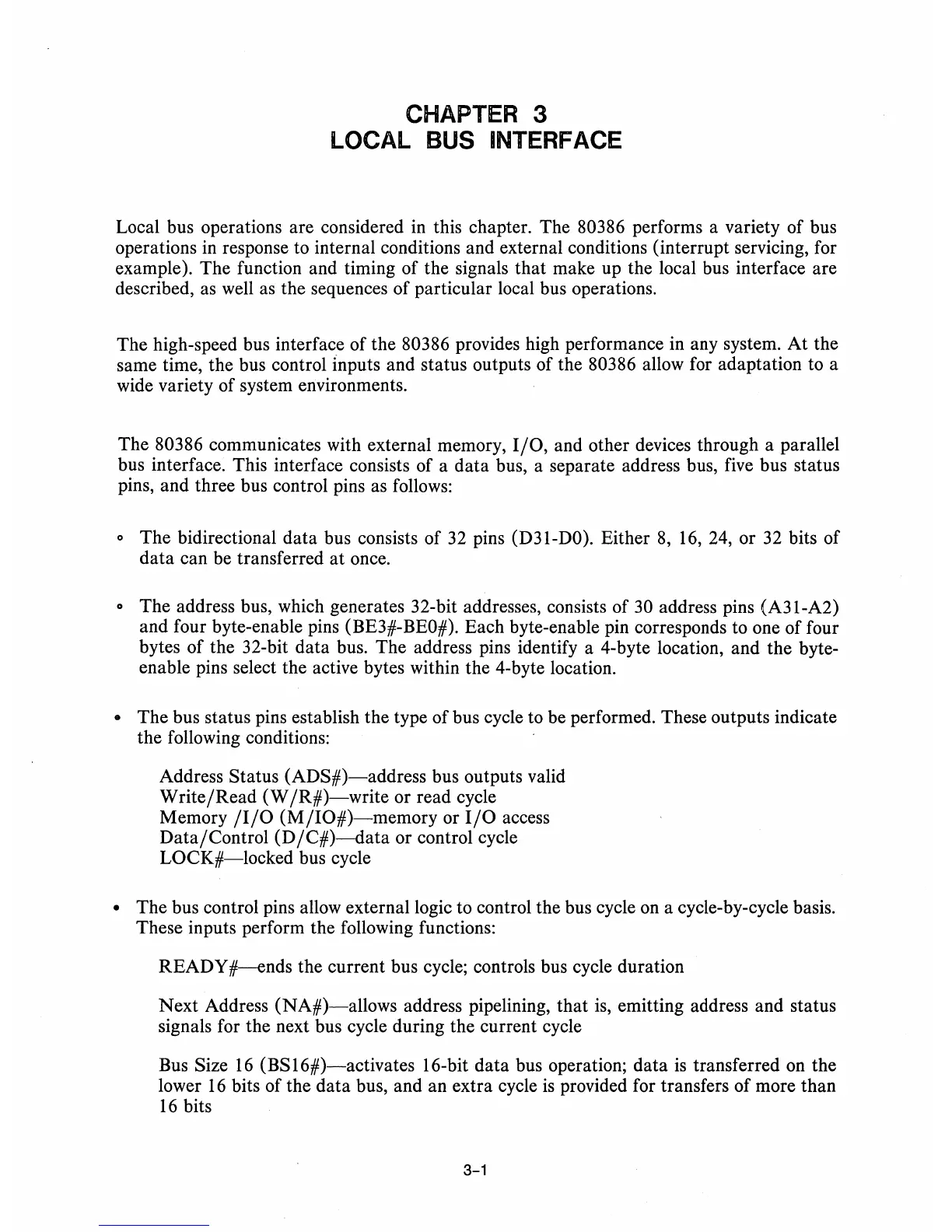CHAPTER 3
LOCAL
BUS
INTERFACE
Local bus operations are considered in this chapter. The 80386 performs a variety of bus
operations in response to internal conditions and external conditions (interrupt servicing, for
example). The function and timing of the signals that make up the local bus interface are
described,
as
well as the sequences of particular local bus operations.
The high-speed bus interface of the
80386 provides high performance in any system. At the
same time, the bus control inputs and status outputs of the
80386 allow for adaptation to a
wide variety of system environments.
The
80386 communicates with external memory,
I/O,
and other devices through a parallel
bus interface. This interface consists of a data bus, a separate address bus, five bus status
pins, and three bus control pins as follows:
o The bidirectional data bus consists of
32
pins (D31-DO). Either
8,
16, 24, or
32
bits of
data
can be transferred
at
once.
o The address bus, which generates 32-bit addresses, consists of
30
address pins (A31-A2)
and four byte-enable pins (BE3#-BEO#). Each byte-enable pin corresponds to one of four
bytes
of
the 32-bit data bus. The address pins identify a 4-byte location, and the byte-
enable pins select the active bytes within the 4-byte location.
• The bus status pins establish the type of bus cycle to be performed. These outputs indicate
the following conditions:
Address Status
(ADS#)-address
bus outputs valid
Write/Read
(W
/R#)-write
or read cycle
Memory
/1/0
(M/IO#)-memory
or
I/0
access
Data/Control
(D/C#)-data
or control cycle
LOCK#-locked
bus cycle
• The bus control pins allow external logic to control the bus cycle on a cycle-by-cycle basis.
These inputs perform the following functions:
READY
#-ends
the current bus cycle; controls bus cycle duration
Next Address
(NA#)-allows
address pipe lining, that
is,
emitting address and status
signals for the next bus cycle during the current cycle
Bus Size
16
(BSI6#)-activates
16-bit data bus operation; data
is
transferred on the
lower
16
bits of the data bus, and an extra cycle
is
provided for transfers of more than
16
bits
3-1

